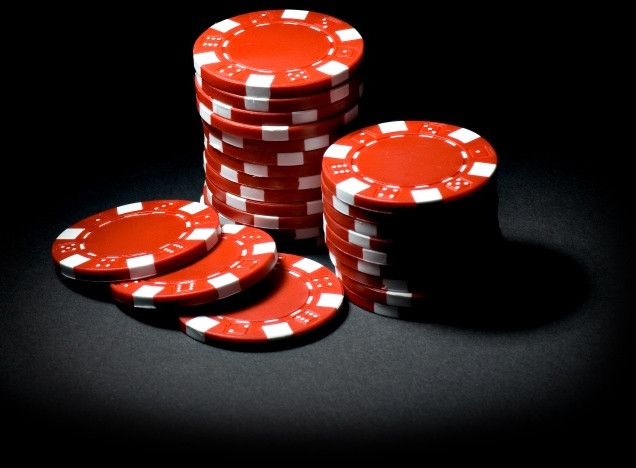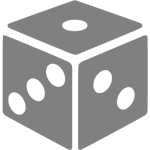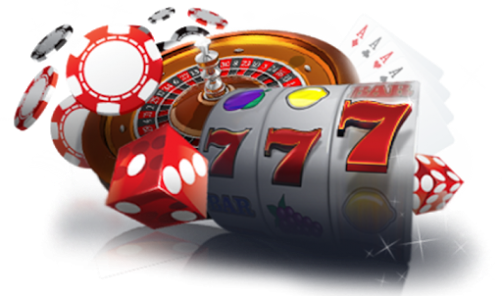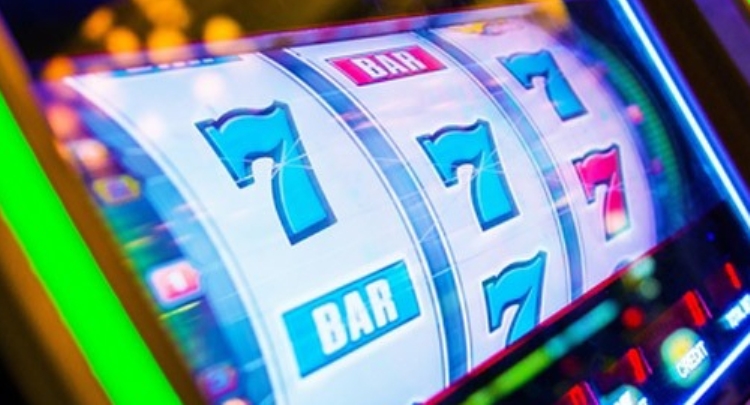- The Reviews
- UNIBET Review 2025
- MANSION Review 2025
- BETSAFE Review 2025
- BWIN Review 2025
- BETSSON Review 2025
- JETBULL Review 2025
- WILLIAM HILL Review 2025
- BET-AT-HOME Review 2025
- ZET Casino Review 2025
- CASINO.com Review 2025
- Mr GREEN Review 2025
- 888 Review 2025
- VEGAS CASINO ONLINE Review 2025
- LAS-VEGAS USA Casino Review 2025
- SUN PALACE Casino Review 2025
- ROYAL ACE Casino Review 2025
- PLANET 7 Casino Review 2025
- CLUB WORLD Casino Review 2025
- SILVER OAK Casino Review 2025
- Free Casino Games
US
- Best Online Casino Games Guide
- Choose Your Best Online Casino
- The Best Casino Games
- Online Card Games
- Best Online Machine Games
- Table Games
- Online Slots
- Complete Modern Online Blackjack Guide
- Free Blackjack Basic Strategy
- Simplified Blackjack Playing Strategy
- How to Play Blackjack Online Like Pros
- Advanced Blackjack Rules and Strategy
- Step-by-Step Blackjack Playing Procedures
- Blackjack Playing Options Guide
- Master Blackjack Card Counting
- Modern Blackjack Card Counters Challenge
- Which is the Best Blackjack Betting System?
- Nine-Count Blackjack Strategy Review
- Blackjack Myths and Errors
- Online Roulette
- Sportsbook
- Online Poker
- Online Video Poker
- Online Scratch Cards
- Online Bingo
- Online Baccarat
- Online Craps
- Asian Casino Games
- Online Keno
- Online Sic Bo
- Casino Bonuses
- Online Casino Reviews
- UNIBET Review, Casino, Sportsbook, Poker & Live Dealers
- BETSAFE Review, Casino, Poker, Live Dealers & Sportsbook
- MANSION Review, Casino, Sportsbook & Live Dealers
- BWIN Review, Sportsbook, Casino, Poker & Live Dealers
- BETSSON Review, Sportsbook, Casino, Live Dealers, Poker
- JETBULL Review -Casino, Sportsbook, Live Dealers
- BET_AT_HOME Review, Sportsbook, Casino, Poker, Live Dealers
- WILLIAM HILL Review -Casino, Sportsbook, Live Dealers, Poker
- ZET Casino Review
- Mr GREEN Review -Casino, Sportsbook & Live Dealers
- CASINO.com Review -Online Casino & Live Dealers
- Las-Vegas USA Casino Review
- Sun Palace Casino Review
- Royal Ace Casino Review
- Planet 7 Casino Review
- Club World Casino Review
- Vegas Casino Online Review
- Silver Oak Casino Review
- Free Casino Games
What Are the Casino Tricks to Retain Gamblers?
The biggest psychological trick that casinos use on consumers is the "Near Miss."
According to a study conducted in 2010 by neuroscientist Reza Habib, they discovered that in the brain chemistry of a pathological gambler, “near misses” actually caused the same brain activity as if they had won.
Our Favorites Online Casinos
- Bonus Amount: $3,000 up to $10,000. The best daily bonuses on the internet.
- Games: An incredible number of slots, table games, and video pokers, including HTML5 games.
- Strong security protocols of 128-bit encryption
- Audited and guaranteed fair by TST
- Website: https://www.lasvegasusa.eu/casino/
- Established: 1999
- Software: Real Time Gaming (RTG)
- US and Canadians players supported
- Platforms Supported: Windows, Mac, iPhone, iPad, & Android.
- Type of Casino: Online & Instant or download.
- Free Slots Games: Yes
- Customer Support: 24/7 live chat support, as well as a toll-free phone number: +506-283-0061, and e-mail support
Write your review of Las-Vegas USA Casino
- Website: http://www.royalacecasino.eu
- Casino Type: download client, instant play, and mobile
- Software: Real Time Gaming (RTG)
- Owner: Emoney Processing Casinos LTD
- Established: 2009
- Casino Promotion: 100% Match Deposit Bonus up to $4,000, Daily and Weekly Bonuses
- Coupon Code: CASINO400
- Currencies: US$, Euros, Yen, Pounds, Bitcoin
- Mobile: both desktop and mobile compatibility
- VIP Program: 5 levels Available
- Support: World Class Support, 24/7 live chat & Toll-free phone number for USA and Canada
- Security: 128-bit SSL encryption
- Certified by: CDS (Central Disputes System)
- Languages: English
- License: Costa Rica
Write your review of Royal Ace Casino
- Bonus: 400% up to $10,000.
- Website: https://www.sunpalacecasino.eu/
- Software: Real Time Gaming (RTG)
- Deposit Methods: ClickandBuy, MasterCard, Money Order, Neteller, Visa Electron, instaDebit, Visa, MST Gift Card, Skrill, Bitcoin
- Withdrawal Methods: ACH, Cheque, Money Order, Neteller, Skrill
- Withdrawal Times: EWallets: 2-5 days, Credit / Debit Cards: 10-12 days, Bank Transfers: 7-12 days, Cheques: 21-28 days
- Pending Time: 3-7 days
- Withdrawal Limit: $5,000 per week
- Games: Incredible number of games of all types
- support: 24/7 through live chat, phone, or e-mail
- Support Response Time: 24 hours via email or Instant using Live Chat.
- Encryption: 128-bit SSL
- Audited and found fair by TST
- Languages: English.
- Progressive Jackpots: up to Million-Dollar.
- Restricted Countries: Bosnia, Costa Rica, Malaysia, Morocco, Netherlands, Russia.
Write a review of Sun Palace Casino
- Bonus: 320% Bonus + 45 Free Spins
- Casino Website: https://www.silveroakcasino.com/
- Casino Promotion: 320% Match Deposit Bonus up to $10,000 in 10 first deposits, up to $100 No Deposit Bonus, Weekly and Monthly Cashback, and much more.
- Casino Type: download client, instant play, mobile, and live dealers
- Software: Real Time Gaming (RTG)
- Live Casino: Available Live Dealers Casino
- Owner: Emoney Processing Casinos LTD
- Established: 2009
- Currencies: US$, Euros, Yen, Pounds, Bitcoin
- Mobile: both desktop and mobile compatibility
- VIP Program: 5 levels Available
- Support: World Class Support, 24/7 live chat & Toll-free phone number for USA and Canada
- Security: 128-bit SSL encryption
- Certified by: CDS (Central Disputes System)
- Languages: English
- License: Costa Rica
Write your review of Silver Oak Casino
- Bonus: First Deposit 350% Bonus + 25 Free Spins
- Website: https://www.planet7casino.com/
- Casino Type: download client, instant play, mobile, and live dealers
- Software: Real Time Gaming (RTG)
- Live Casino: Available Live Dealers Casino
- Owner: Emoney Processing Casinos LTD
- Established: 2008
- Casino Promotion: 200% Match Deposit Bonus up to $4,000, and much more.
- Currencies: US$, Euros, Yen, British Pounds, Bitcoin
- Mobile: both desktop and mobile compatibility
- VIP Program: Available
- Support: World Class Support, 24/7 live chat & Toll-free phone number for USA and Canada
- Security: 256-bit SSL encryption
- Certified by: CDS (Central Disputes System)
- Languages: English
- License: Costa Rica, Cyprus, the United Kingdom, and the Netherlands.
Write a review of Planet 7 Casino
- Bonus: Get 300% Match up to $3000 FREE Welcome Bonus
- Website: https://www.clubworldcasinos.com
- Software: Real Time Gaming (RTG)
- Mobile: Android, iPhone, iPad
- Casino Type: Download, Instant Play, Mobile
- Currency: US dollars
- Language: English
- License: Curacao
- Owner: Club World Casinos Group Casinos
- Established: 2005
- Audit: RTP Not publicly audited
- Currency: US dollars
Write a review of Club World Casino
- Bonus: Get 300% Match up to $3000 FREE Welcome Bonus
- Website: https://vegascasinoonline.eu/
- Established: 1999
- Software: Real Time Gaming (RTG)
- Currencies: US$
- US and Canadians players: supported
- Bonus Amount: up to $11,000 Match Bonus
- Platforms Supported: Windows, Mac, iPhone, iPad, & Android.
- Type of Casino: Download & Online Instant Play.
- Free Slots Games: Yes
- Owner: Main Street Vegas Group Casinos
- License: Costa Rica
- US Customer Support: (877) 691-5124
- Canada Customer Support: (888) 387-6717
- Email Address: [email protected]
- Live Chat: Yes
- Response Time: 24 hours via email or Instant using Live Chat.
- Languages: English.
- Progressive Jackpots: up to 1 Million-Dollar.
Write a review of Vegas Casino Online
Casino Tricks
But to a nonpathological gambler, a “near miss” was what it actually was, a loss.
Knowing this, gambling companies artificially increase the number of “near misses” to make pathological gamblers feel like they are winning and therefore keep playing.
According to a state lottery consultant, “Adding a near miss to a lottery is like pouring jet fuel on a fire… Do you want to know why sales have exploded? Every other scratch-off ticket is designed to make you feel like you almost won.”
Casino Tricks: The study
The purpose of this translational study was twofold:
(1) to contrast behavioral and brain activity between pathological and nonpathological gamblers, and
(2) to examine differences as a function of the outcome of the spin of a slot machine, focusing predominately on the ‘‘Near-Miss’’—when two reels stop on the same symbol, and that symbol is just above or below the payoff line on the third reel.
Twenty-two participants (11 nonpathological; 11 pathological) completed the study by rating the closeness of various outcomes of slot machine displays (wins, losses, and near-misses) to a win.
No behavioral differences were observed between groups of participants, however, differences in brain activity were found in the left midbrain, near the substantia nigra and ventral tegmental area (SN / VTA).
Near-miss outcomes uniquely activated brain regions associated with wins for the pathological gamblers and regions associated with losses for the nonpathological gamblers.
Thus, near-miss outcomes on slot machines may contain both functional and neurological properties of wins for pathological gamblers.
Such a translational approach to the study of gambling behavior may be considered an example that gives life to B. F. Skinner’s conceptualization of the physiologist of the future.
Casino Games Blog 2025
The Bitcoin Casino Guide
Casino Tricks: Near-Misses
With respect to the specific win, near-miss, and loss networks that were active, our goal was to both identify regions that were common to both groups and regions that were unique to each group.
For wins (wins–losses), the conjunction analysis carried out to identify common regions between the two groups failed to reveal any significant activation suggesting that the network underlying wins were completely separate for pathological and nonpathological gamblers.
With regard to unique activations, we identified a region in the right superior temporal gyrus that was unique in nonpathological gamblers. In pathological gamblers, the winning network consisted of unique activations in the uncus and the posterior cingulate gyrus, both regions within the extended medial temporal lobe system.
For losses (losses–wins), common activations for pathological and nonpathological gamblers were noted in the bilateral medial parietal region (precuneus), bilateral middle/superior occipital gyrus, and bilateral superior frontal gyri.
Unique activations in nonpathological gamblers were noted in an extensive network that included the medial and bilateral lateral parietal cortices and the medial, bilateral middle frontal, and left inferior frontal gyri, amongst a broader network.
This network was greatly reduced in pathological gamblers with the only region showing significant activation occurring in the right lateral parietal cortex.
For near-misses (near-misses–losses), there was only minimal common activation. Activations in nonpathological gamblers occurred in a region in the left inferior parietal lobule near to a similar region activated when contrasting losses with wins.
That is, in nonpathological gamblers, a similar region was activated when these individuals viewed losses and near-misses. Conversely, activations in pathological gamblers occurred in the uncus in the right anterior medial temporal lobe as well as the right inferior occipital gyrus.
In contrast to the nonpathological gamblers, the near-miss acti- vation in the pathological group overlapped more with activations seen in the wins–losses contrast.
Together, these sets of analyses support our hypothesis that nonpathological gamblers are more likely to view near-misses for what they truly are—losing outcomes, whereas brain activity in pathological gamblers indicates that near-misses appear to activate some of the same brain regions that are activated in this group when they experience winning spins.
Two observations regarding the win network are noteworthy.
First, this network was more extensive in pathological than nonpathologi- cal gamblers.
Second, whereas the right superior temporal gyrus was activated in nonpathological gamblers, the network in pathological gamblers included regions of the medial temporal lobe including the uncus extending into the amygdala bilaterally and the cingulate gyrus, as well as the midbrain.
These activations are especially interesting given that all subjects received the same monetary compensation for participating in the experiment and winning spins were not associated with any additional payout.
Never- theless, pathological but not nonpathological gamblers activated emotional regions of the brain as well as portions of the midbrain that are part of the brain’s reward system.
One potential interpretation may be that pathological gamblers found the winning spins more pleasant, positive, or rewarding, even though no additional payout was provided.
Another possibility is that pathological gamblers have gambled consider- ably more during their lives than nonpatholo- gical gamblers, so that the function of the near-miss is comparatively well-learned (as reflected in the differing patterns of brain activation).
A related thought is that gambling may enter into a much wider array of environment–behavioral relations in the path- ological gambler (e.g., enabling relations, such as hiding gambling debts and lying about gambling activities), resulting in more exten- sive networks of brain activation under exper- imental conditions such as gambling, includ- ing those that alter the significance of the near-miss.
These speculations, which require a substantial amount of research to even begin to address, highlight the likely bidirectional nature of brain–behavior interactions.
Indeed, the finding of greater activity during winning and near-miss spins in the anterior medial temporal region in patholog- ical but not nonpathological gamblers is consistent with a role for structures in this region in the aberrant learning that is hypoth- esized to underlie various forms of addiction.
Past studies have shown that the amygdala and the hippocam- pus receive dopaminergic projections from the mesolimbic reward pathway and send projec- tions to the nucleus accumbens.
Thus, the amygdala and hippo- campus play an integral role in the dopami- nergic mesolimbic reward system, the neural system that underlies experiences of pleasure and reward as well as addiction.
Additionally, the amygdala has been implicated in the learning of associations between specific cues and drug-induced states, as well as stress- induced drug seeking behavior. Together, these findings suggest that activity in the anterior medial temporal region in the pathological gamblers may be associated with aberrant emotional highs to the winning slot machine outcomes, and in a casino environment, this type of brain response may increase the likelihood of pathological gambling, especially since a main motivator for gambling is as a means to deal with day-to-day stress.
Turning to the losses, two observations are also noteworthy about this set of results.
First, the network of activated regions was more extensive in nonpathological than pathologi- cal gamblers, and secondly, the network in nonpathological gamblers involved medial and lateral parietal cortices, as well as bilateral frontal cortices.
In pathological gamblers the only region uniquely active was the superior parietal cortex. The more extensive nature of the network may imply that nonpathological gamblers are more responsive to losses than pathological gamblers.
The regions involved in the loss network are intriguing because similar regions have been associated with the less impulsive choice in the delayed discounting procedure.
Greater activity within dorsolateral prefrontal and posterior parietal cortices when subjects preferred trials with a larger delayed reward over a smaller immediate reward. Interestingly, when subjects indicated that they preferred the smaller immediate reward over the larger delayed reward, McClure et al. observed activity in dopamine-innervated regions within the limbic system—amygdala, nucleus accum- bens, ventral pallidum, and related struc- tures—regions that in the present study were active when pathological gamblers viewed winning outcomes.
Bechara labeled these two systems the ‘‘impulsive’’ and ‘‘re- flective’’ systems. It appears that the impul- sive system is recruited when pathological gamblers experience winning spins, whereas the reflective system is recruited when non- pathological gamblers are faced with losing spins.
Compatible findings with regards to the distinction between the impulsive limbic system and the reflective/executive frontal/ parietal system have been reported in several other fMRI studies as well.
Besides similar regions of activation, the delayed discounting literature is relevant because previous research has indicated that pathological gamblers tend to discount de- layed rewards to a greater extent than non- pathological gamblers.
For example, delayed discount- ing in pathological gamblers with and without substance-abuse problems and control sub- jects. The pathological gam- blers without substance abuse problems dis- counted more than control subjects; however, the pathological gamblers with substance abuse problems discounted significantly more than both the control subjects and the pathological gamblers without substance abuse problems.
The severity of pathological gambling as measured by the SOGS was positively correlated with delayed discounting: Subjects with more severe pathological gam- bling behavior discounted more than subjects with less severe pathological gambling behavior. Finally, Dixon, Marley, and Jacobs reported that even moderate pathological gamblers discounted more than nonpathological gamblers on a delayed dis- counting procedure.
Given the tendency for greater discounting and overlap in activated brain regions, these findings suggest that pathological gambling may be viewed as an impulse control problem.
Differences in activity between pathological and nonpathological gamblers were noted in the left midbrain, near the substantia nigra and ventral tegmental area (SN / VTA).
The SN / VTA is the origin of the mesostriatal and mesolimbic pathways. Dopa- minergic neurons of the mesolimbic pathway project primarily to the NA in the ventral striatum. We found that in pathological gamblers, activity in the left midbrain correlated with activity in the right nucleus accumbens.
The nucleus accum- bens, through the neurotransmitter dopa- mine, has been shown to mediate the experi- ence of natural rewards such as food and sex.
In drug addiction, the nucleus accumbens has been linked to the rewarding effects (‘‘high’’) of illicit drugs such as amphetamine and cocaine as well as the prediction of the occurrence of a reward.
It has been hypothesized that a reduction in the sensitivity of the mesolimbic reward pathway to natural reinforcers may lead individuals to seek out illicit drugs in order to activate this reward system.
Consistent with this hypothesis, the lower level of activity in the midbrain dopaminergic system paired with a positive correlation with the nucleus accum- bens suggests that pathological gamblers may also have a hyposensitive reward system.
In a manner similar to the development of drug addiction, this may lead individuals to seek out gambling as a means of activating the mesolimbic reward system, po- tentially leading to the development of path- ological gambling over time.
Two caveats about this set of results should be mentioned, however.
First, while we prefer this interpreta- tion of the present data, it should be noted that because a nongambling baseline condi- tion was not included in the study, it is unclear whether the observed differences between pathological and nonpathological gamblers in the SN / VTA are specific to gambling stimuli or whether they are global differences in brain activity.
Second, while there is some debate with regards to the ability to localize the BOLD signal within the SN / VTA.
Was This Helpful?
Recommend us on Facebook










